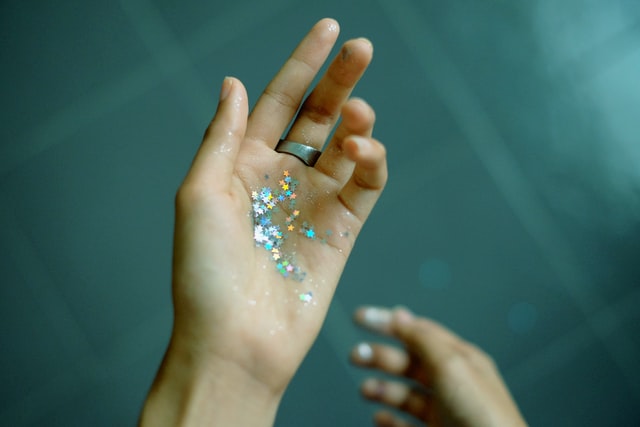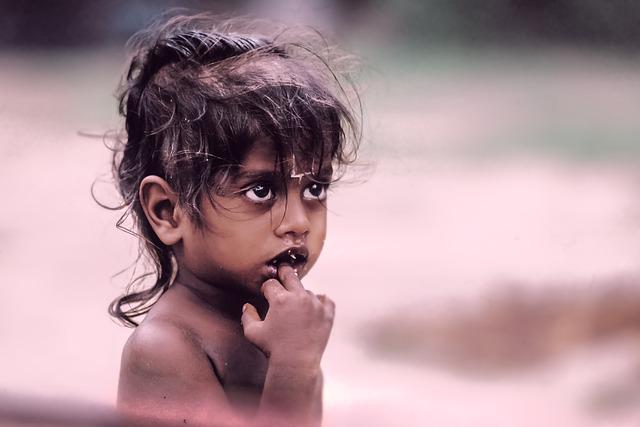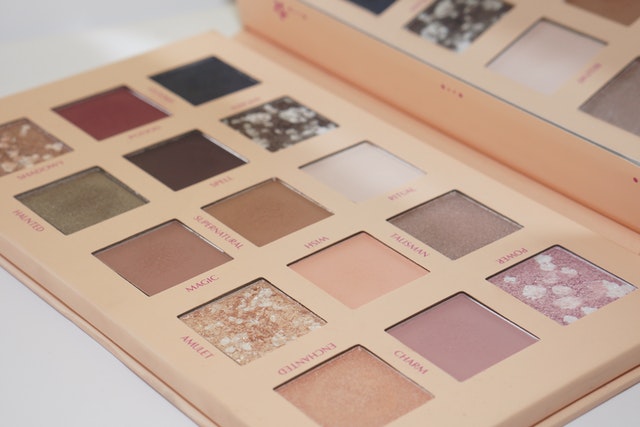Whether it’s for glimmering cosmetics, children’s toothpaste or car paints, mica is the go-to mineral for manufacturers seeking to add a delicious shimmer to their products. Because most of us simply aren’t interested in the fact that child labour is a key part of the process of creating that shine – just as long it glimmers beautifully. To find out why mica is such a problem for society and industry, read on.

MICA, THE GLIMMER MINERAL – AND NOT JUST IN COSMETICS
“Mica” is the name used for so-called “glimmer minerals”, a group including granite, sandstone, marble and others. The mineral glimmers naturally, making it incredibly popular in the cosmetics industry as a result: whether it’s in rouge, powder, lipsticks, eye shadows or nail varnish, all that glimmers usually contains mica. If you thought mica was just an ingredient used by the cosmetics sector, however, you’d be wrong. The shimmering mineral can be found in numerous other everyday products. There are particles of it in our gleaming mobile phones, for example, along with computers, household goods, paints and varnishes. Mica even offers a practical side-effect: it insulates heat and power, and can be used as a filler.
ILLEGAL MINING IN CONDITIONS UNFIT FOR CHILDREN
As in so many cases such as this, however, it’s not the end-user who ends up paying the price for the glimmering eye shadow. Instead, it’s the countless thousands of people digging up mica in mines, day-in, day-out. Mica is mined in more than 35 countries. India where rates of pay and mining costs are lowest, is one of the largest exporters. Most illegal mining never even stops for the sake of child labour. Up to 22,000 children mine mica each day in India alone. Spending up to 12 hours a day in the brutal heat, with little or no water, the children dig up stones and sort them out by size. Then, normally using small baskets, they lift the mineral out of these holes, which they themselves have dug and can be up to 20 metres deep. The youngest of these children are just four years old. Because their parents, who are employed at the mines, have no way of providing childcare, they are forced to take their children with them to work. Even babes in arms can be seen; the mother will usually be caring for them alone, and have several children’s mouths to feed back at home. Hunger is a fickle companion, however, and can often force entire families into the illegal work sector.
CHILDREN EXPOSED TO DUST, HEAT AND DISEASES

It’s plain to see that this work must have consequences for the children. At temperatures of up to 45°C (113°F), without shade and surrounded by tons of dust, the working conditions are not just physically unbearable, but also dangerous in the extreme. The children working there suffer from respiratory conditions, silicosis, cuts, weeping wounds and dehydration, because there’s no water available to them. On top of all this, many of the children are anaemic and undernourished. Tuberculosis is also widespread. Output at the illegal mines has actually increased since the beginning of the pandemic; during lockdown, when many schools were closed, parents unable to leave their children there during the day often took them to the mines.
WORKING TO STARVE
Starvation rates of pay, which can often be measured in cents, are responsible for the hours-long drudgery. Entire families earn between 1 euro and 1.50 euro a day for their work. The children sort and mine up to 10 kg a day, subjecting their small, delicate and emaciated bodies to backbreaking work. The money is not sufficient for most workers’ families. Once deductions have been made for the house, transport (which has to be paid for by the workers themselves) and to cover other expenses, they are left with between 5 and 7 cents a day. For a family numbering several people. These conditions are already something very close to slavery.
DANGER OF DEATH IN COLLAPSES
The greatest risk, however, is often to be found in the mine itself. Small holes, especially those the children have blasted or dug themselves, are particularly dangerous. This is where most of the children are used, because – unlike adults – they can get down to the stones and quarry them more easily. Death lurks at every turn for the children, however: thousands have already been buried in holes of this kind, as the earth can often collapse in a matter of seconds, fragments come loose from the walls, and the child is no longer able to find a way out in this dangerous situation. Depending on the depth of the hole, parents can then only look on, helpless, as their child is slowly crushed beneath the masses of earth, sand and dust, and suffocates. With the holes anything up to 20 metres deep, any desperate rescue operation often comes too late, even if all other nearby workers rush to help. All that is left are sadness and despair, with no way out.
MANY COMPANIES; FEW ADMISSIONS OF GUILT
The agony, the suffering and exploitation begin anew with every new day. The demand from the groups is too great. The supply chains too opaque. The pressure to have to eat as a family too strong. The perspectives for alternatives in India’s rural regions too little. Quite simply, the traders are too powerful.
The structure of the machinations involved is also highly sophisticated. Again and again, traders acquire certificates enabling them to sell their goods on the international market. Almost nobody questions how the mica is actually mined during this process. Tracking this is difficult for the police and enforcement agencies, not least because when raids are carried out, the mines are usually empty within minutes, and they cannot blame workers themselves for the illegal mining, which is exploitative of them anyway. The families already have enough suffering to deal with. The police are powerless and discouraged.
Many international producer companies are well aware of the child labour that goes on at the mines, but do not contribute in any way whatsoever by improving conditions, or using alternative materials in their products. Mica is just too cheap. The beautiful glimmer of the eye shadow on the shelf in the shop just too tempting.
RETHINKING IN SIGHT – CONSUMERS AND THE RMI INITIATIVE (RESPONSIBLE MICA INITIATIVE)
Luckily, as a result of documentation, clarification and publicity work, several real changes have started to be made in recent years, as consumers begin to rethink the situation. Many people are increasingly concerned with ingredients, and the origin of the products. The pressure being exerted on the groups is becoming greater, as are the awareness of bad working conditions and a company’s social duty.
As a result, several major chains have already spoken out against the usage of mica in their products, and called to life the Responsible Mica Initiative (RMI). The companies participating in the initiative only want to source mica from legal mines by 2023. The goal of doing this is to close supply lines by terminating the purchase, and by doing so ensure better conditions, and exclusively ethically correct mining, over the long term. Whether this theory is also applied and actually changes anything remains to be seen; the supply lines themselves are barely comprehensible, even for smart and trained individuals.
The organisation Terre de Hommes is also committed to ensuring that in future, children do not just survive, but are able to live their lives to the full, and are given the opportunity to gain an education.
ALTERNATIVES IN SIGHT: GLIMMER PARTICLES WITHOUT CHILD LABOUR
The first alternative products have now gone into production as well. Some manufacturers, for example, are replacing mica with synthetic materials or cellulose particles. There are even new types of organic plastics, designed to be biodegradable, on the market. The use of these materials has still far from reached the levels required for mass production, however, as the substitutes are mostly (still) more expensive than the global shipment of mica by traders from around the world, and consequently also the exploitation of children.

USING OUR PURCHASING POWER – PROTECTING CHILDREN
Even if we may sometimes seem to be powerless, we can also do something to combat these critical, exploitative conditions – as consumers. Whenever we purchase a cosmetic item, we can take a glance at the label and check whether that new nail varnish, cosmetics product or electrical device contains mica.
You can check whether a product contains the mineral by looking at its INCI (International Nomenclature of Cosmetic Ingredients) number, CI 77019. Often, the cosmetics industry doesn’t even try to conceal the material. In many cases, you’ll even find the word “mica” directly in the list of contents.
So if you have the choice between a mica-free alternative or supporting child labour through illegal mining, then please reach firmly for the former the next time. Due to the lower demand for critical products and an increase in demand for ethically correct products, we can ensure child labour in mica mines is eradicated forever, thereby ensuring these children, too, can enjoy an education and lay the foundation for their future.
Translation by Tim Martinz-Lywood, European Exchange Ltd.
www.european-exchange.co.uk
